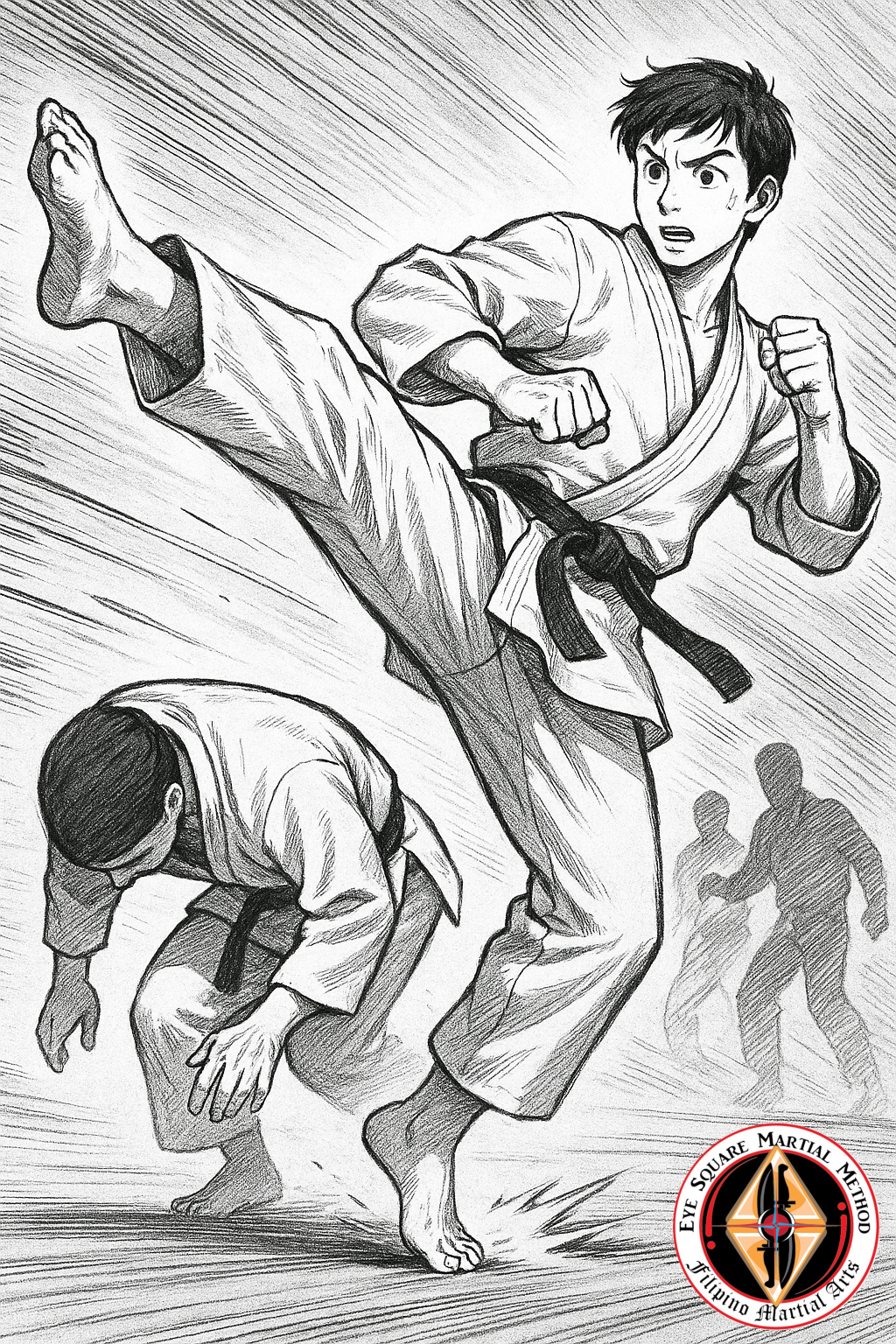You’ve seen them in tournaments and on the big screen—graceful arcs sweeping toward an opponent’s head, the crowd erupting in cheers. But stepping into a real‐world altercation is nothing like sparring under bright lights or rehearsing in a dojo. Here’s why chasing flashy high kicks can leave you flat on your back—and what to drill instead.
1. The Allure of the High Kick
- Spectacle Over Substance
High kicks showcase flexibility, coordination, and athleticism. They look great in demonstrations and add flair to competition. - Cultural Conditioning
From classic kung fu films to modern MMA highlight reels, we’ve been taught that a perfectly placed head kick equals instant victory.
While they catch the eye, these kicks often trade reliability for drama.
2. The Hidden Costs of High Kicks
- Balance and Base
- Lifting your center of gravity makes you unstable. A single misstep or feint can send you sprawling.
- Recovering from a missed high kick often takes longer than deflecting or blocking a low attack.
- Telegraphing Your Intent
- Big muscle groups engage well before impact, giving observant opponents time to anticipate and counter.
- Even a slight shift in weight or hip rotation can signal your target.
- Exposure to Counters
- A low‐line counter (leg sweep, body lock, or takedown) becomes much easier when your kicking leg is hanging in the air.
- Weapons or multiple attackers capitalize on your momentary imbalance.
- Environmental Variables
- Uneven ground, tight spaces, or obstacles make high kicks risky or impossible.
- In wet or slippery conditions, planting and pivoting for a head kick can turn a powerful technique into a dangerous fall.
3. Low-Line Techniques That Deliver
Rather than risking your base, focus on strikes and defenses below the waist:
- Leg Sweeps & Hooks
• Target the standing leg to off-balance an attacker without leaving you exposed. - Knee Strikes
• Close the distance to deliver powerful strikes to ribs or mid-section with minimal wind-up. - Low Line Kicks (Thigh & Knee Level)
• Quick, small kicks to the thigh can slow momentum and force an attacker off-guard. - Footwork & Positioning
• Redirect angles to control distance, forcing attackers to reset instead of committing to a high-risk kick.
4. Training for Practical Effectiveness
- Drill Low-Line Strikes Under Pressure
- Incorporate leg kick sparring with light protective gear to build timing and conditioning.
- Balance & Recovery Exercises
- Practice single-leg stance drills that simulate missed kicks to strengthen your ability to regain posture quickly.
- Scenario Simulations
- Use padded targets at calf, thigh, and hip levels to train instinctive responses rather than rehearsed flash moves.
- Adaptive Footwork
- Combine shuffle steps, pivots, and lateral movement to set up low-line strikes while staying mobile.
Conclusion
High kicks will always have their place—in sport, performance, and the artistry of martial arts. But when it comes to staying upright, maintaining control, and neutralizing real threats, low‐line techniques win the day. Prioritize balance, unpredictability, and efficiency in your training, and you’ll be surprised how a well-timed sweep or knee strike can outshine the most dazzling head kick.


Leave a Reply